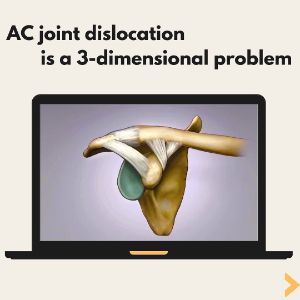A biceps tendon tear is an injury that affects one of the main tendons surrounding the biceps muscle, typically occurring at the shoulder or elbow area. The biceps muscle, located in the front of the upper arm, has two primary tendons that connect it to the shoulder and another to the elbow. When one of these tendons sustains a tear, it can cause significant pain, weakness and limited range of motion, impacting an athlete’s ability to perform.
Causes of a Biceps Tendon Tear
Biceps tendon tears can occur for various reasons, often associated with overuse, sudden trauma or degenerative changes that occur with aging. Here are some common scenarios leading to this injury:
- Sports Injuries: Contact sports like football or activities that involve repetitive overhead motions, such as baseball or swimming, can lead to a sudden tear.
- Accidents: Falls or accidents where a person attempts to catch themselves with their arm can also result in a torn muscle or ligament.
- Aging: Degenerative wear and tear of the tendon can contribute to a biceps tendon tear, especially in individuals over the age of 40.
Treatment Options for Biceps Tendon Tears
When it comes to treating a biceps tendon tear, the course of action typically depends on the severity of the injury. The main treatment options include:
Conservative Treatment: Many partial tears can be treated non-surgically. This includes rest, ice application, pain-relief medication and physical therapy to strengthen the surrounding muscles and improve range of motion.
Surgical Intervention: In cases where the tear is severe or if the biceps tendon has completely ruptured, surgical repair may be necessary. This procedure usually involves reattaching the tendon to the bone using sutures or anchors.
For patients with partial tears who still have symptoms after non-surgical treatments or who wish to regain full arm strength—such as athletes or manual laborers—surgery might be the best choice.
The Healing Process
The healing time for a biceps tendon tear can vary based on the type of tear and whether surgery is required. Generally, the expected timeline is:
- Non-Surgical Recovery: For partial tears, recovery typically takes between 6 and 12 weeks. During this time, patients begin to regain mobility and strength through rehabilitation exercises and physical therapy.
- Post-Surgery Recovery: For those who undergo surgery, the healing process is more extended, typically around 3 to 6 months before resuming normal activities. Initially, there will be a focus on immobilization, followed by gradual movement and strengthening exercises.
Recommended Timeframe Before Returning to Sports
Athletes eager to return to their sport after a biceps tendon tear should give themselves ample time for healing to avoid the risk of re-injury. A general guideline for return to sports includes:
- 3 Months: If the tear is minor and conservative treatment is effective, athletes may return to non-contact sports or modified activities within this time frame, provided they have adequate strength and mobility.
- 6 Months: For individuals who have undergone surgery or suffered a more significant tear, it is typically recommended to wait at least six months before resuming high-impact sports, such as football or basketball.
NYC Biceps Tendon Rupture Treatment
At AC Joint Separation in NYC, we take pride in being the leading specialists for shoulder injuries. Our extensive experience in diagnosing and treating shoulder-related concerns equips us to help athletes recover from injuries like biceps tendon tears efficiently. Our dedicated team works closely with you to tailor a rehabilitation plan that meets your specific recovery needs, ensuring a safe return to sports.
FAQs About Biceps Tendon Tears
What are the symptoms of a biceps tendon tear?
Common symptoms include a sudden, sharp pain in the shoulder or elbow, a “popping” sound during injury, swelling, bruising and difficulty lifting objects or performing overhead activities.
Can I continue to play sports if I suspect a biceps tendon tear?
It’s essential to seek medical attention if you experience symptoms of a biceps tendon tear. Continuing to play can worsen the injury and prolong recovery.
What exercises can help during the recovery process?
Rehabilitation may involve strengthening exercises focusing on the shoulder and upper arm, such as shoulder flexion or rotator cuff strengthening. Always consult with a physical therapist for a customized plan.
Are all biceps tendon tears treated the same way?
No, treatment varies based on the severity of the tear. Most partial tears can be treated conservatively, while complete ruptures often require surgical intervention.
What is the risk of developing a biceps tendon tear again?
Individuals who have experienced a biceps tendon tear may have an increased risk of future tears, particularly if they return to activities prematurely or fail to follow a proper rehabilitation program.
NYC Shoulder Injury Specialist
Injuries like a biceps tendon tear can be serious setbacks for athletes, but with proper treatment and rehabilitation, many can return successfully to their beloved sports. If you’re facing this challenge, don’t hesitate to reach out to Steven Struhl, MD, for guidance and support in your recovery journey.
Posted on behalf of Steven Struhl MD





